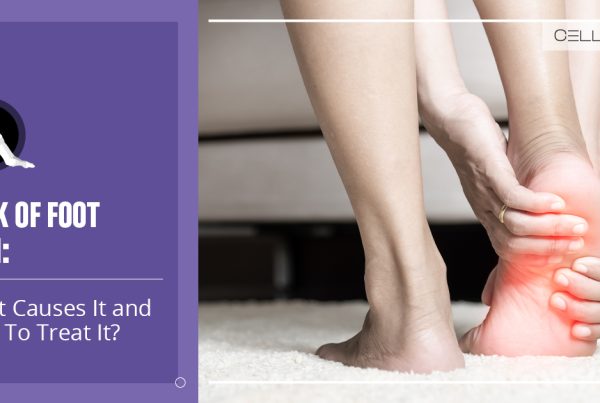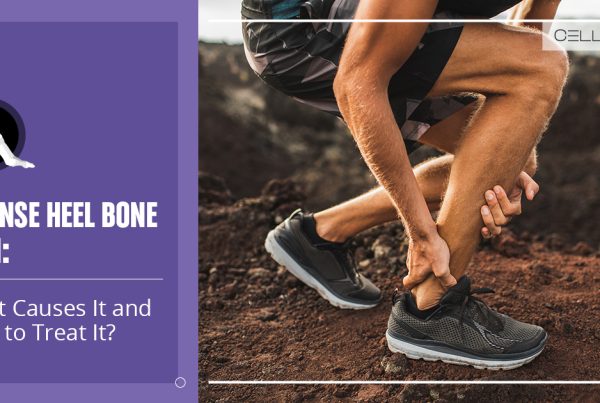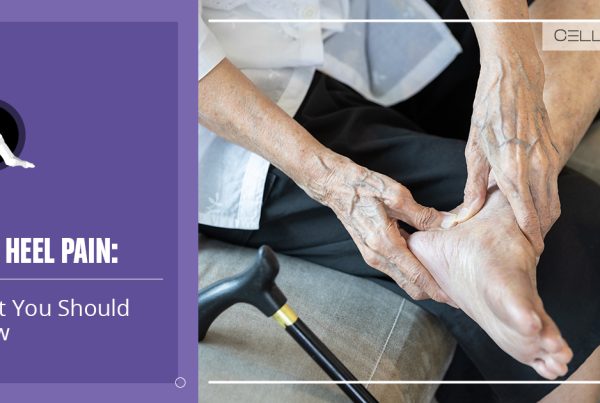Published on: August 31, 2022 | Updated on: August 29, 2024
A torn meniscus is a knee injury that can heal naturally in various ways. Multiple studies have found that non-surgical torn meniscus treatments give similar results as surgical options.
The natural recovery of a torn meniscus depends on the location, severity, and size of the tear. If these factors are checked, you’d need to strengthen your muscles through physical therapy, have a better diet, and practice PRICE (defined below) to recover from the tear.
What is a Torn Meniscus?
Your leg has two types of bones: the femur and the tibia. The femur is the thigh bone, and the tibia is the shinbone (lower leg).
Both of these bones join to make up your knee joint. Your knee joint consists of two cushioned menisci, c-shaped cartilage pieces between your femur and tibia.
The menisci are shock absorbers to protect your knee joint from sudden wear and tear. You can tear your meniscus if you do activities or sports involving twisting, rotating, and turning the knee.
Types of Meniscus Tears
The most common types of meniscus tears are:
Radial Tear
It is a common meniscus tear that occurs within the meniscus area. In this area, the blood supply is pretty low, making it difficult for the tear to heal quickly. Typically, radial tears require surgical treatments that include removing the affected part of the meniscus.
Horizontal Tear
A horizontal tear requires immediate meniscus repairs. During the treatment, the damaged area of the meniscus is sewn together instead of removed.
Complex Tear
A complex tear involves a combination of different tears, such as radial and horizontal tears. Since these tears are harsh, your surgeon won’t recommend treating them with meniscus repair or removal since they are difficult.
Intrasubstance Tear
An intrasubstance tear is a sign of early degenerative damage in the meniscus that doesn’t show up during surgery. However, they’re found easily on an MRI report. Such tears are considered stable and usually don’t require surgery to heal.
Bucket-handle Tear
It is a severe form of a horizontal tear that makes the knee movement almost impossible. In the bucket-handle tear, the torn meniscus causes the knee to get stuck, making it challenging to bend your leg. These tears require surgical treatments to heal.
Flap Tear
A flap tear, also called a displaced flap, results from a horizontal tear. Flap tears are divided into two categories: superior interior and.
Superior flap tears occur on the upper meniscus surface, and inferior flap tears on the lower surface. The treatment for flap tears involves the removal of the meniscus flap without interfering with the entire tissue.
The type of your meniscus tear determines the nature of the treatment and recovery duration.
How to Know If You Have a Torn Meniscus?

The primary sign of a torn meniscus is severe inflammation in your knee joint accompanied by aching pain. Other symptoms to look for are:
- Swelling of the knee area
- Frequent popping and clicking sensations
- Unstable knee
- Restricted motion range of the knee
- Knee locks
If you feel most of the above symptoms, immediately consult your doctor to get your knee condition diagnosed.
Treatments for Torn Meniscus Without Surgery
Torn meniscus treatments reduce pain and inflammation to help you return to normal. Here is how to heal a torn meniscus naturally:
PRICE
This is the first-hand treatment for a torn meniscus, which is short for:
- Protect: This means preventing the possible causes of a torn meniscus (sports) or walking with crutches to shield your knee.
- Rest: This could mean resting on the bed or walking with crutches to distribute the pressure on your knees. Resting allows the injury to heal naturally, without any surgery.
- Ice: Icing, or cryotherapy, relieves the inflammation in your body, reducing the swelling and pain simultaneously.
- Compress: Compression therapy involves inflammation management by helping the veins return blood from your injury point through stockings, bandages, or knee sleeves.
- Elevate: It means elevating your affected leg to regulate blood flow from accumulating around your knee joint. You’d need to lie down straight and put one or two pillows under your knee. Elevation may have similar benefits as compression and icing.
PRICE treatment gives instant and practical stages when done in the early stages of your injury. The quicker you lower your inflammation and swelling, the faster you can heal.
Pain and Anti-inflammatory Medications
Taking pain and anti-inflammatory medicines with PRICE in the initial days of your injury gives you better results. However, your doctor may ask you to continue them longer based on your tolerance and healing condition.
The two common types of medicines for treating a torn meniscus are:
- Over-the-counter (OTC) medicine: These include non-steroidal anti-inflammatory drugs (NSAIDs), like Advil and Tylenol, and acetaminophen.
- Prescription Drugs: These primarily include corticosteroids or other pain and swelling-relieving narcotics. But of course, you can’t use prescription drugs on your own and require your doctor’s approval.
Typically, your doctor would recommend OTC medicines before prescription drugs for pain and swelling relief.
Physical Therapy
Physical exercises are the best way to build muscles and regain body balance. In addition, studies have shown that resistance training can strengthen your connective tissues, such as ligaments, cartilage, and tendons.
The key to achieving success with physical therapy is to start gradually and then intensify the routine as your stamina builds up. The best exercises are isometric, which include contracting your muscles while keeping your joints still.
Some exercises to focus on to heal a torn meniscus naturally are:
- For Your Quads: Put a rolled towel under your knees and try to exert force on it. The towel will keep your knees in a bent position and prevent movement.
- For your hamstrings: Follow the same position as your quads, but put slight downward pressure on your heel.
- Calf Raises: Place a chair or table in front of you at a distance from where you can touch it with your fingers. Now, stand tall on your tippy-toes with feet shoulder-width apart. Stay still for 3-5 seconds and gradually lower your body down.
You can also have a comprehensive exercise plan from your physical therapist.
Nourishment
Lastly, you must include some anti-inflammatory and wound-healing nutrients in your diet. These nutrients build the necessary collagen your body requires to rebuild damaged cartilage or meniscus.
Ensure that your diet includes:
- Calcium
- Vitamin C
- Vitamin D
- Vitamin K
- Zinc
- Magnesium
- Silicon
- Protein
- Omega-3s
- Boron
- Arginine/citrulline
- Inositol
- Creatine
- Fiber
Orthobiologic Treatment
This natural cell-based therapy alleviates pain, regenerates cells, and enhances the function of the knee joint. It is a minimal, low-risk alternative to surgeries that shortens recovery times and reduces associated risks.
In an orthobiologic treatment, regenerative cells are collected from the inflamed bone marrow and blood. These cells are observed in a laboratory under advanced technology. Then, they are injected into the knee joint.
These cells repair and regenerate the inflamed tissues of your knee. Over time, you’ll feel less pain and improvement in your mobility. Orthobiologic treatments are suitable for meniscus tears that don’t involve knee locking.
How Long Does it Take for a Meniscus Tear to Heal Naturally?
A minor meniscus tear could take about 4 weeks to heal naturally. However, in severe cases, it may take up to 12 weeks to recover fully.
Generally, you can heal from a torn meniscus more quickly and effectively if you’re consistent with your exercise and diet routine.
Sources
Footnotes
- Katz JN, Brophy RH, Chaisson CE, De Chaves L, Cole BJ, Dahm DL, Donnell-Fink LA, Guermazi A, Haas AK, Jones MH, Levy BA. Surgery versus physical therapy for a meniscal tear and osteoarthritis. New England Journal of Medicine. 2013;368(18):1675-84.
- Mordecai SC, Al-Hadithy N, Ware HE, Gupte CM. Treatment of meniscal tears: an evidence based approach. World journal of orthopedics. 2014;5(3):233.
- Vieira Ramos G, Pinheiro CM, Messa SP, Delfino GB, Marqueti RD, Salvini TD, Durigan JL. Cryotherapy reduces inflammatory response without altering muscle regeneration process and extracellular matrix remodeling of rat muscle. Scientific Reports. 2016;6(1):18525.
- Partsch H. Compression therapy: clinical and experimental evidence. Ann Vasc Dis. 2012;5(4):416-22.
- Fleck SJ, Falkel JE. Value of resistance training for the reduction of sports injuries. Sports Med. 1986;3(1):61-8.
- Dhalla IA, Gomes T, Mamdani MM, Juurlink DN. Opioids versus nonsteroidal anti-inflammatory drugs in noncancer pain. Can Fam Physician. 2012;58(1):30.
References
- Torn Meniscus. Johns Hopkins Medicine. Accessed 9/6/2023.
- Meniscus Tear Knee Injury. WebMD. Accessed 9/6/2023.
- 9 meniscus tear exercises. Medical News Today. Accessed 9/6/2023.
- 10 Supplements That Fight Inflammation. Healthline. Accessed 9/6/2023.
CELLAXYS does not offer Stem Cell Therapy as a cure for any medical condition. No statements or treatments presented by Cellaxys have been evaluated or approved by the Food and Drug Administration (FDA). This site contains no medical advice. All statements and opinions are provided for educational and informational purposes only.
Dr Pouya Mohajer
Author
Pouya Mohajer, M.D. is the Director of Spine and Interventional Medicine for CELLAXYS: Age, Regenerative, and Interventional Medicine Centers. He has over 20 years of experience in pain management, perioperative medicine, and anesthesiology. Dr. Mohajer founded and is the Medical Director of Southern Nevada Pain Specialists and PRIMMED Clinics. He has dedicated his career to surgical innovation and scientific advancement. More about the doctor on this page.
Dr Pejman Bady
Contributor
Dr. Pejman Bady began his career over 20 years ago in Family/Emergency Medicine, working in fast-paced emergency departments in Nevada and Kansas. He has served the people of Las Vegas as a physician for over two decades. Throughout this time, he has been met with much acclaim and is now the head of Emergency Medical Services in Nye County, Nevada. More about the doctor on this page.









